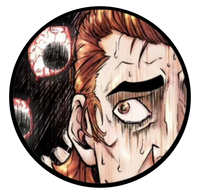Hatching and Crosshatching in comics, a great tool in your toolbox.
- icecomics1
- Oct 11
- 3 min read
Hatching and Crosshatching is one of those classic techniques that has been essential in the world of comics for generations. I’ve always been amazed by how this straightforward method can significantly enhance one's art, so let's explore a bit the history of crosshatching in comics, its evolution, and why you should consider adding it in your toolbox (if you haven't already done so).
The Historical Roots of Hatching
Crosshatching and hatching has a rich history that dates back to early printmaking. Artists used this technique to create shading and texture in their works, delivering intricately detailed illustrations. Artists like Albrecht Dürer (1471-1528) who is credited to have revolutionized printmaking and also one of my personal favorites from the 18th century, Francisco Goya. These artists meticulously used this method to achieve depth like no other in their printing forms.

The Evolution of Crosshatching in Comics
As comic artistry developed, so did the techniques. The mid-20th century shifted towards more stylized styles, yet aspects of crosshatching and hatching remained vital for many artists. David Mazzucchelli work in "Batman: Year One," is a prime example. Allowing for a powerful visual narrative that also showcased his distinctive use of light and shadow with powerful use of his inking skills.

In the digital age, these techniques continues to thrive. Software like Procreate and Photoshop have given artists the chance to experiment with crosshatching and hatching brushes that imitate traditional techniques with ease and at a fraction of the time it took the old masters to do.
Crosshatching and hatching in the Digital Space
Today, crosshatching is more accessible than ever, especially for those of us who create comics digitally. I personally have been utilizing a set of Procreate crosshatching brushes, and the best part of it is, i made them myself.
With these brushes, you can effortlessly add texture and depth to characters and backgrounds. Enhancing visual storytelling significantly, allowing you to focus more on creativity and less on technical constraints.
If you use Procreate and want to try some, here is a link to my set for a few bucks, and let me know what you think:
Embracing Crosshatching for Your Art
Crosshatching has successfully adapted to meet the demands of modern comic art, transitioning from traditional methods to contemporary digital applications. If you are a comic artist, i would highly encourage you to experiment with this technique to elevate your work.
You don’t need to be a pro to start; you can either just grab a pen and paper or try some fun digital brushes you can also find for free on your device to make digital art.
I recommend starting simple. Practice varying the density and angle of your crosshatching lines. Notice how they affect the mood and dimension of your illustrations. A few strategic crosshatching strokes can turn a flat image into a dynamic scene, adding a new layer of interest.

In conclusion, crosshatching is a great technique, it serves as a bridge connecting the rich history of the old masters to the new age of comic art. So grab whatever your tools are and start experimenting!




Comments